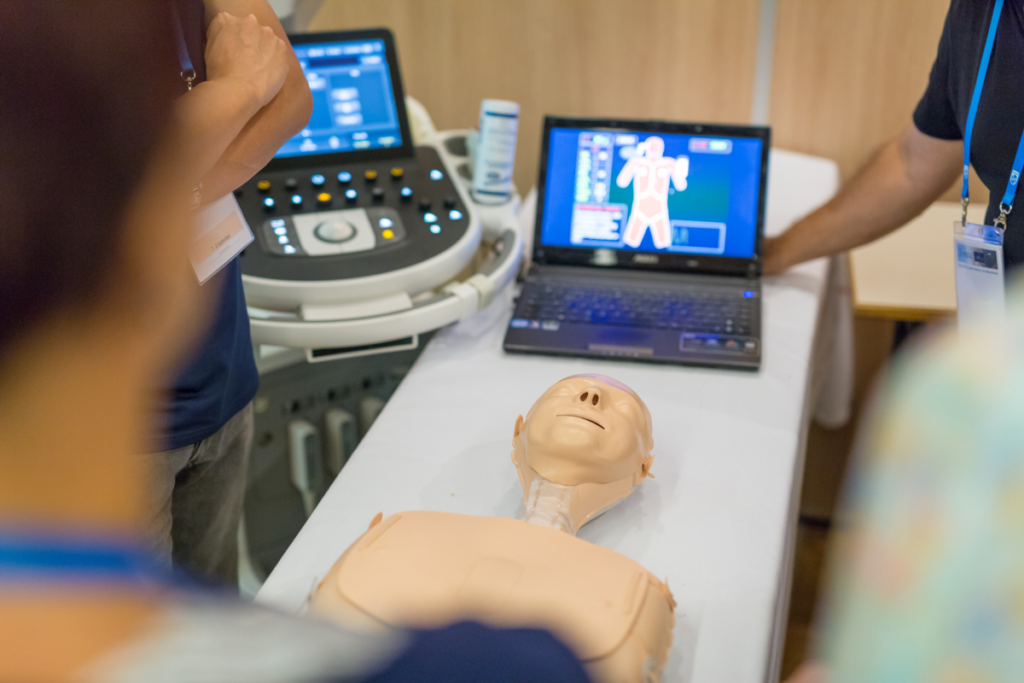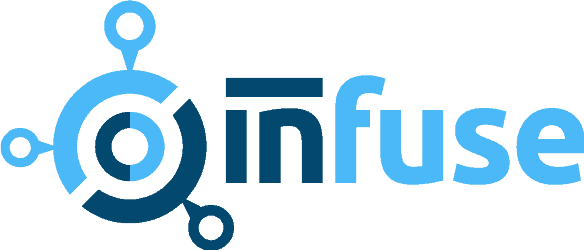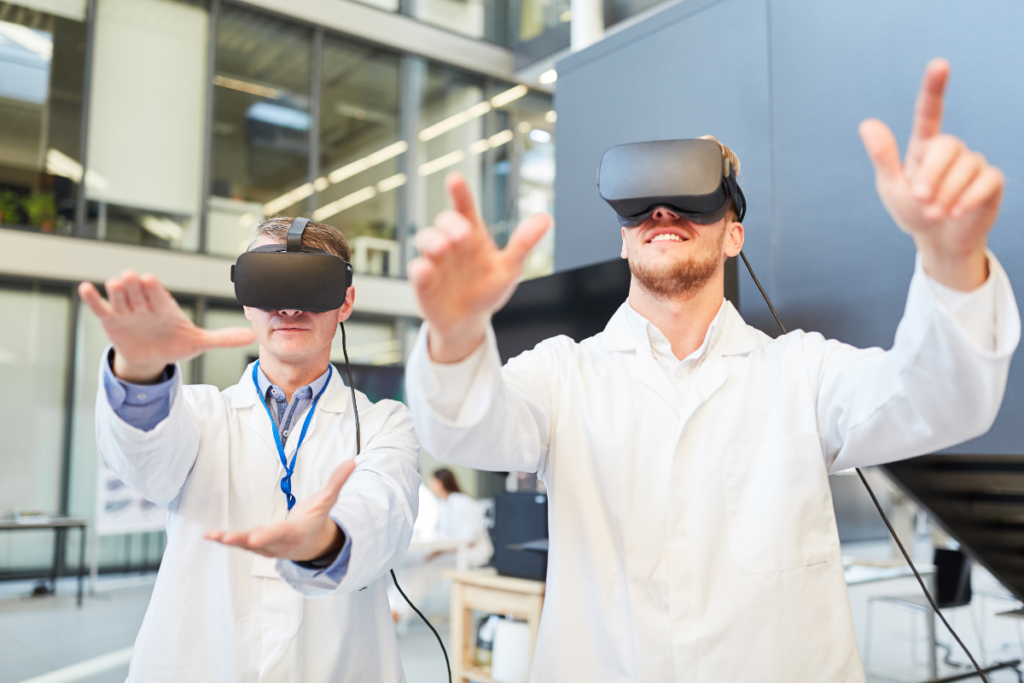In today’s rapidly advancing healthcare landscape, the demands placed on medical professionals are greater than ever. With new medical devices, surgical techniques, and treatment protocols emerging constantly, the need for effective, efficient, and scalable training methods has become paramount. Traditional approaches—textbooks, live demonstrations, and hands-on workshops—while valuable, are no longer sufficient to meet the complexities of modern healthcare. This gap has been bridged by advanced technologies like Virtual Reality (VR), Augmented Reality (AR), and 3D animation, which are revolutionizing medical training.
Advanced technologies are not merely enhancing medical training; they are reshaping it. The adoption of VR/AR in healthcare training has grown rapidly, with the market projected to reach $11.14 billion by 2025. Infuse Med is at the forefront of this transformation, offering cutting-edge solutions that empower healthcare professionals, improve learning retention, and address the logistical challenges of traditional training methods.
Challenges in Medical Training
High Costs and Resource Constraints
One of the most significant barriers to effective medical training is cost. Traditional training methods often require expensive physical models, limited medical devices, and high logistical expenses for organizing workshops or events. For smaller or remote organizations, accessing these resources becomes even more challenging. The financial burden of in-person training can deter many organizations from delivering high-quality education to their teams.
For instance, a small clinic might struggle to provide hands-on device training for their staff due to the prohibitive costs of equipment and qualified trainers. This creates a gap in knowledge that impacts patient outcomes and organizational efficiency.
Difficulty in Mastering Complex Procedures
The complexity of modern medical devices and procedures often leads to steep learning curves. High-stakes fields such as minimally invasive surgery or robotic-assisted techniques demand precision and expertise, leaving little room for error. Inadequate training can result in increased procedural errors, slower adoption of new technologies, and compromised patient safety.
Consider a newly introduced robotic surgical system: without comprehensive training, even experienced surgeons may struggle to master its nuances, leading to longer procedures and potential complications.
Limited Scalability of Traditional Models
Traditional in-person training is inherently difficult to scale, especially for global healthcare organizations. Conducting multiple sessions across different locations requires significant resources, coordination, and time. Additionally, maintaining consistency in training quality across regions is a persistent challenge.
For example, a medical device manufacturer seeking to train clinicians worldwide faces logistical hurdles in ensuring uniformity in their training programs. This is where technology-driven solutions like VR and AR become invaluable.
Advanced Technologies Reshaping Medical Training

Virtual Reality (VR)
VR has emerged as a transformative tool in medical training, offering immersive, hands-on learning experiences. By simulating realistic clinical environments, VR allows trainees to practice complex procedures without the risks or costs associated with live training. For instance, simulated surgeries using VR provide real-time feedback on techniques, enabling surgeons to refine their skills in a controlled, risk-free environment.
Moreover, VR platforms can replicate high-stress scenarios, such as emergency response situations, to prepare medical teams for real-world challenges. This experiential learning approach has been shown to improve skill retention and boost confidence among healthcare professionals.
Augmented Reality (AR)
AR enhances traditional training methods by overlaying digital visuals onto real-world environments. This technology is particularly effective in anatomy lessons, where trainees can interact with 3D holographic models of the human body. AR also plays a critical role in device functionality training by providing step-by-step guidance during live demonstrations.
Imagine a surgical resident using AR glasses to visualize critical anatomical structures while performing a cadaver dissection. This augmented layer of information not only aids in understanding but also minimizes errors during procedures.
3D Animation
3D animation is a powerful tool for simplifying complex medical concepts. By breaking down intricate procedures into visually engaging animations, trainees of varying expertise levels can easily grasp advanced techniques. These animations are widely used in eLearning modules, allowing healthcare professionals to learn at their own pace.
For example, a 3D animated video illustrating the mechanics of a new cardiac stent can help sales teams and clinicians understand its functionality and application more effectively than static diagrams or lengthy manuals.
Key Benefits of Technology-Driven Training
Enhanced Learning Retention and Confidence
Research indicates that immersive learning experiences significantly improve knowledge retention compared to traditional methods. VR and AR enable trainees to practice repeatedly in realistic scenarios, reinforcing their skills and building confidence. This hands-on, risk-free environment is particularly beneficial in high-pressure fields like surgery and emergency medicine.
Global Scalability and Consistency
Technology-driven training solutions offer unparalleled scalability. VR platforms, for example, can deliver standardized training programs across multiple locations, ensuring consistency in content and quality. A global healthcare organization can deploy the same VR module to train clinicians in Asia, Europe, and North America, eliminating the variability often seen in traditional training.
A case study involving a global pharmaceutical company showed how VR training reduced onboarding time by 30% while maintaining uniformity in learning outcomes across regions.
Data-Driven Insights for Skill Improvement
Advanced technologies provide valuable analytics to track trainee performance. Metrics such as completion rates, error patterns, and time spent on tasks allow trainers to identify areas for improvement and tailor programs accordingly. This data-driven approach ensures continuous skill development and optimal training outcomes.
Real-World Applications
VR Training for Minimally Invasive Surgeries
One of the most impactful applications of VR is in training for minimally invasive surgeries. Surgeons can practice complex procedures in a virtual environment, receiving real-time feedback on their techniques. This approach accelerates skill acquisition while reducing training costs.
AR Anatomy Lessons
AR-based anatomy lessons have proven to be more engaging and effective than traditional methods. By interacting with 3D models, trainees gain a deeper understanding of human anatomy, leading to better retention and application of knowledge.
Infuse Med’s Contributions
Infuse Med has been instrumental in developing innovative training programs for healthcare organizations. For example, their VR modules have helped clinicians master new surgical techniques, while 3D animations have simplified the training process for complex medical devices. Infuse Med’s commitment to excellence ensures that their solutions are tailored to meet the unique needs of each client.
The healthcare industry is undergoing a transformation, and medical training must evolve to keep pace. Advanced technologies like VR, AR, and 3D animation are no longer optional; they are essential for delivering effective, efficient, and scalable training solutions. These tools empower healthcare professionals, improve learning outcomes, and address the challenges of traditional training methods.
Infuse Med is proud to be at the forefront of this revolution, offering cutting-edge solutions that redefine medical training. To learn more about how Infuse Med can help your organization, explore our VR, AR, and 3D animation services here or contact us today.

